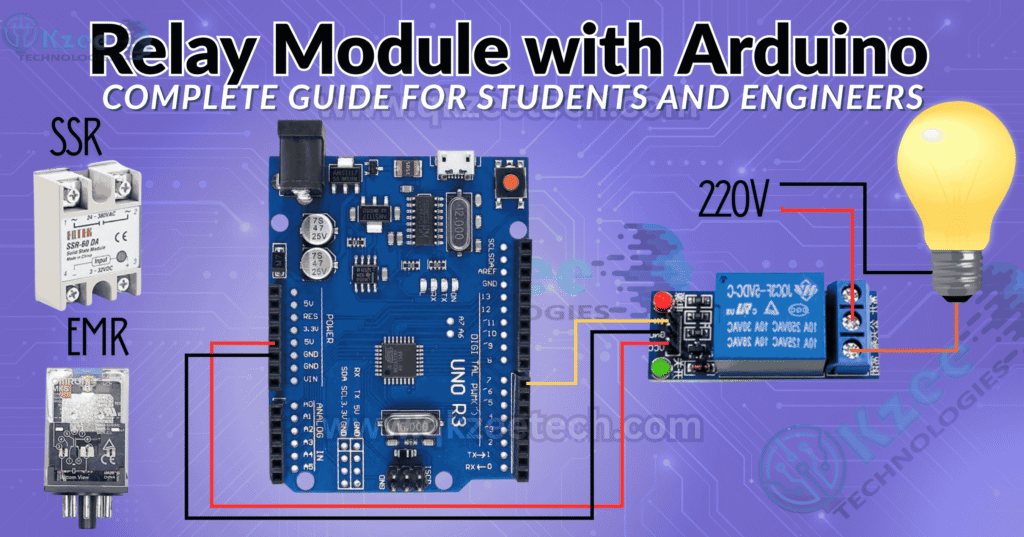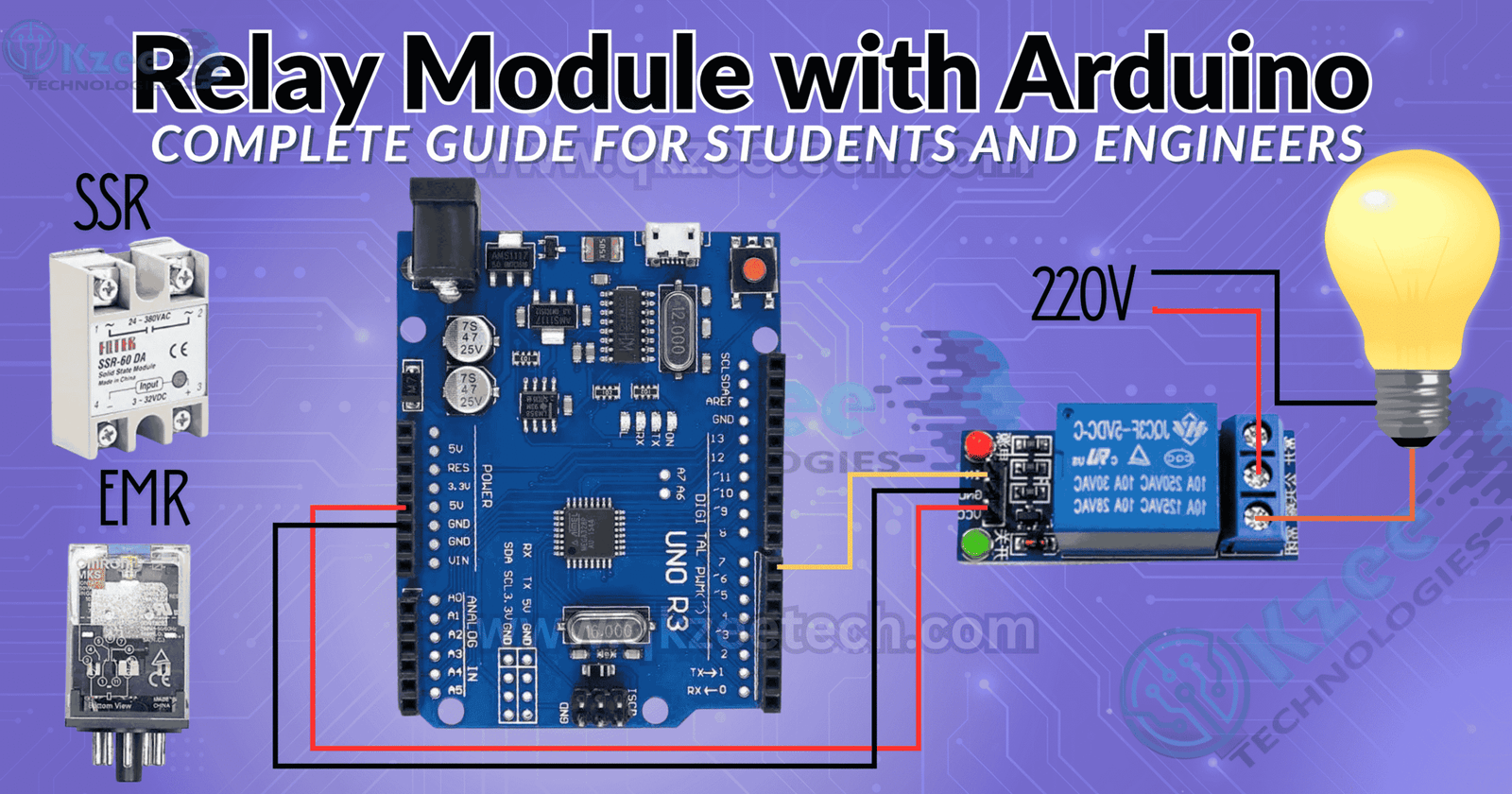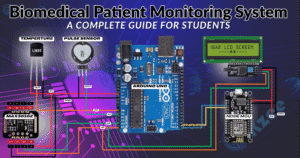How to Connect a Relay Module with Arduino – Complete Guide for Students and Engineers
How to Connect a Relay Module with Arduino – Complete Guide for Students and Engineers
Introduction – What Is a Relay and Why It’s Used in Electronics
A relay module Arduino setup is one of the most essential circuits in electronics engineering. A relay acts as an electrically operated switch that allows low-power circuits to control high-power devices such as lights, motors, or fans. It’s widely used in automation projects, IoT systems, and final year projects for students in Lahore.
In the electronics market near Hall Road, QKZee Technologies and QKZ Tech (founded by Qasim Shahzad) provide the best engineering services and electronics parts for university projects and school science projects at the best price in Pakistan. If you’re searching for students projects near me or consultation for final year projects in Lahore, understanding the relay module Arduino connection is a great starting point.
Relay Working Principle – Electromagnetic Switching
A relay module works on the principle of electromagnetic induction. When a small current flows through the coil, it creates a magnetic field. This field pulls a metal armature, which closes (or opens) a set of contacts, allowing current to flow through another circuit.
In simple terms, your Arduino board controls the small input current, while the relay switches a larger current for appliances. The relay module Arduino combination provides isolation between the control and power circuits, ensuring safety in automation and industrial projects.
Relays are crucial in IoT systems, Arduino robots, home automation, and industrial control panels.
Types of Relays – Mechanical and Solid-State
There are two primary types of relays used in engineering projects:
1. Electromechanical Relays (EMR)
These relays use physical moving parts to make and break electrical connections. They are common in DIY projects, school projects, and basic automation systems.
2. Solid-State Relays (SSR)
SSRs have no moving parts. They use semiconductor components for faster switching, long life, and silent operation. They are ideal for industrial automation and cnc projects.
At QKZee Technologies Lahore, both types are available with expert guidance on how to use, how to make, and how to connect them with Arduino, ESP32, or Raspberry Pi.
How to Connect a Relay Module with Arduino – Step-by-Step Wiring Guide
To connect a relay module to an Arduino, you need basic electronics parts and some wiring knowledge. Follow these steps carefully:
Components Required
Arduino UNO or Mega
Single-channel relay module
Jumper wires
LED bulb or fan
Power supply (5V–12V)
Circuit Connections
Connect VCC of the relay module to the 5V pin of Arduino.
Connect GND to the GND pin of Arduino.
Connect IN pin of the relay module to Digital Pin 7 of Arduino.
Connect the COM terminal of the relay to the live wire of your device (e.g., light bulb).
Connect the NO (Normally Open) terminal to one end of the load.
When you upload your Arduino relay control code, the relay will toggle the load ON and OFF, allowing you to control AC appliances safely.

Arduino Code Example – Controlling a Light or Fan
Here’s a simple Arduino relay control code:
int relayPin = 7;
void setup() {
pinMode(relayPin, OUTPUT);
}
void loop() {
digitalWrite(relayPin, HIGH); // Turn ON relay
delay(3000);
digitalWrite(relayPin, LOW); // Turn OFF relay
delay(3000);
}
This code alternates the relay module ON and OFF every 3 seconds. You can use it to control a light, fan, or even motor.
For IoT-based automation, this code can be modified using Firebase, Blynk IoT, or ThingSpeak IoT platforms, which are frequently used in final year projects in Lahore and engineering universities across Pakistan.
Applications – Home Automation and Industrial Control
Relay modules are vital components in both home and industrial automation. Let’s look at some real-world applications:
1. Home Automation Systems
Relays are used to control lights, fans, and home appliances via Arduino or ESP8266 Wi-Fi boards. This setup is ideal for students projects in Lahore aiming to build IoT smart homes.
2. Industrial Automation
In industrial projects, relays manage heavy machinery, CNC automation, and motor controllers. They offer electrical isolation and safety.
3. Robotics and DIY Projects
Arduino robots often use relays to control motors, sensors, and other components. It’s a must-learn module for electronics engineering students working on final year projects.
4. Biomedical and Mechanical Projects
Relays can also switch sensors, pumps, or valves in medical science model projects and mechanical engineering projects.
Conclusion – Safety Tips and Best Practices
When working with relay modules, always ensure you understand the voltage ratings and isolation requirements. Avoid touching live wires and double-check your connections before powering the circuit.
For beginners and students, QKZee Technologies provides consultation for final year projects in Lahore, helping you select the best price and best engineering components for your designs.
If you’re exploring how to make automation projects, QKZ, Qasim Shahzad, and QKZ Tech are your go-to partners for innovation, training, and expert support in electronics engineering Pakistan.
Where to Buy Your Electronics Components
Looking for affordable components for this Arduino project? Check out QKZee Technologies, an online shop in Lahore, Pakistan, offering the best components for students and DIY projects. Whether you’re looking for sensors, modules, or other electronics at a cheap price, they’ve got it all. Visit them at QKZeeTech.
1. What is a relay module used for in Arduino projects?
It controls high-voltage devices like fans, bulbs, and motors using Arduino.
2. Can I use multiple relays with Arduino?
Yes, you can connect multiple channels for controlling multiple devices.
3. Is the relay safe for beginners?
Yes, but ensure proper insulation and low-voltage testing before using AC loads.
4. Can relays be used for IoT automation?
Absolutely. They work with Firebase, Blynk, and ThingSpeak IoT for smart automation projects.
5. Where can I buy relay modules in Lahore?
visit QKZee Technologies Hall Road Lahore, or contact QKZee Technologies for genuine parts and student-friendly prices,
You can buy them at QKZee Technologies, Hall Road Lahore, at the best price with complete project guidance.




